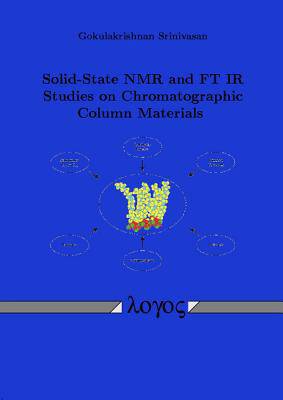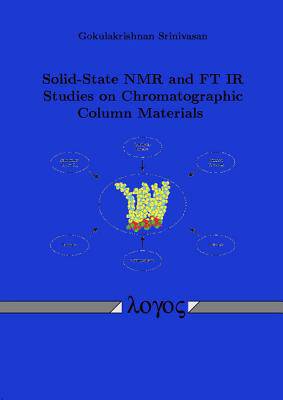
- Afhalen na 1 uur in een winkel met voorraad
- Gratis thuislevering in België vanaf € 30
- Ruim aanbod met 7 miljoen producten
- Afhalen na 1 uur in een winkel met voorraad
- Gratis thuislevering in België vanaf € 30
- Ruim aanbod met 7 miljoen producten
Zoeken
Solid-State NMR and FT IR Studies on Chromatographic Column Materials
Gokulakrishnan Srinivasan
Paperback | Engels
€ 98,45
+ 196 punten
Omschrijving
The development of alkyl bonded stationary phases is one of the major factors, which lead to the growth of reversed-phase high performance liquid chromatography as the most popular mode of high-performance liquid chromatography. In such materials, the conformational order of the alkyl chain moieties is expected to be a major source for the efficiency and selectivity during chromatographic separations. Describing the alkyl chain conformational order on the molecular level is thus crucial for the understanding of such materials function in their respective chromatographic applications. In the present work FT IR and solid-state NMR spectroscopic techniques are employed to examine the conformational order and mobility of alkyl chain segments chemically attached to solid surfaces. The influence of the different solid supports, pressure, surface coverage, synthetic routes and solvents over the wider temperature range on the conformational order of the alkyl chains have been examined. Inspection of the FT IR data for the C30 SAMs reveals that the solid substrate plays a vital role for the actual conformational state of the attached alkyl chains. On investigating commercial DiamondBond-C18 phases, it is found that alkyl chains tethered to the graphite layer, exhibit a higher conformational order than those in conventional column materials. A comparative study reveals that C18 alkyl modified silica gels with higher surface coverage exhibit a higher conformational order compared to one with lower surface coverage. It was found that the C18 phases and solvents interact significantly, resulting in pronounced changes of the alkyl chain conformational order. A decrease in the conformational disorder is found on application of pressure to the stationary phase materials. The results derived from the present studies state that these aforementioned parameters have a strong influence on the conformational order and mobility of alkyl chains tethered to the inorganic metal oxides.
Specificaties
Betrokkenen
- Auteur(s):
- Uitgeverij:
Inhoud
- Aantal bladzijden:
- 135
- Taal:
- Engels
Eigenschappen
- Productcode (EAN):
- 9783832510565
- Verschijningsdatum:
- 13/01/2005
- Uitvoering:
- Paperback
- Formaat:
- Trade paperback (VS)
- Afmetingen:
- 145 mm x 211 mm
- Gewicht:
- 171 g

Alleen bij Standaard Boekhandel
+ 196 punten op je klantenkaart van Standaard Boekhandel
Beoordelingen
We publiceren alleen reviews die voldoen aan de voorwaarden voor reviews. Bekijk onze voorwaarden voor reviews.








